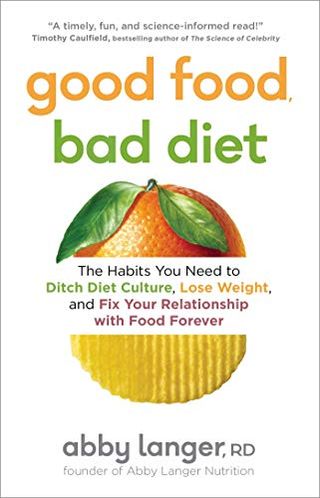\u2018High Value Eating\u2019 Will Make You Love Your Diet Again
WHEN IT comes to food and eating, it’s easy to get distracted by what our diet can do for us physically.
We’re so used to focusing on macros, calories, grams, and pounds, that we forget about the emotional side of eating. We’ve been trained to think of ‘emotional eating’ as something negative, when it isn’t necessarily that way.
Food is fuel, but it’s so much more. And even though you might have physical goals, balancing them with a way of eating that takes your mental health into account, is always a good idea.

Especially now.
That’s why, in my book Good Food, Bad Diet, I introduce readers to the concept of “High Value Eating”.
Here’s what the concept does (and doesn’t do).
High Value Eating is a way of eating that nourishes your body physically, while acknowledging and normalizing that emotional nourishment is also a healthy part of eating.
High Value Eating show us how food can add to our life and our health, without restriction—which is something that diet culture has made into a regular occurrence for a lot of us.
High Value Eating doesn’t drill food down into numbers, and has zero tolerance for guilt and shame. It never assigns moral labels like ‘good’ or ‘clean’ to what we eat. All of these things are unnecessary for health and overall wellness.
High Value Eating recognizes that while some foods might not be the most physically nourishing, these foods bring us joy, and shouldn’t be excluded from our diets. I’m not talking ‘cheat days’ here; it’s more of a day-to-day assessment of the balance you need. That means basing most of your meals on an abundance of plants, fiber, and proteins, but it also means that sometimes, nourishing yourself means eating pizza or burgers, if those are what you’re craving at the time.
So, how do you implement High Value Eating into your life—and for your physical and mental benefits? Here’s how.
Be A Pencil, Not An Eraser.
We’re so used to ‘erasing’—taking foods out of our diet unnecessarily.

This limits our nutrient intake and the variety of foods we eat, but it also doesn’t make sense.
All it takes is some diet guru to tell us that gluten is ‘toxic,’ and out of our diets it goes! But unless we have a legit medical condition, most of us don’t have to stop eating gluten, dairy, wheat, sugar, or any of the other usual suspects. Be a pencil, and add those foods back into your diet.
Eat Whole Or Minimally Processed Foods When Possible.
This one’s a given: Buy the best quality food you can afford, and make the majority of them whole or minimally processed. There is a place in everyone’s diet for ultra-processed foods, but they shouldn’t be the mainstay of what you eat.
Understand Your Lifestyle.
A lot of us try to twist our lifestyle to fit a diet, but that’s frustrating and doesn’t last long-term. Instead, choose an eating pattern that fits with how you live.
Be Intentional.
If you want a brownie, don’t torture yourself with a back and forth about whether or not to eat it.

Eat it—then move on. Be mindful of the overall quality of your diet, as well as what you crave, and how what you eat makes you feel.
Understand that there are no ‘bad’ foods, and that nothing terrible is going to happen to you if every once in a while, you ditch the salad and eat foods that are less physically nourishing.
Eat For You, Not For Everyone Else.
Everyone you know might be on some sort of eating plan that sounds great, but if it doesn’t work with your lifestyle, preferences, or goals, then it’s not worth doing. Don’t jump on the fad bandwagon: do what works for you.
Source: Read Full Article
